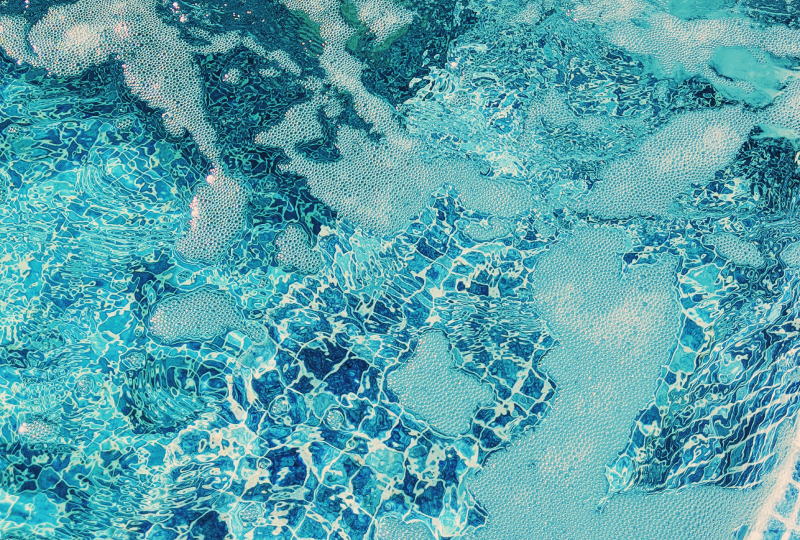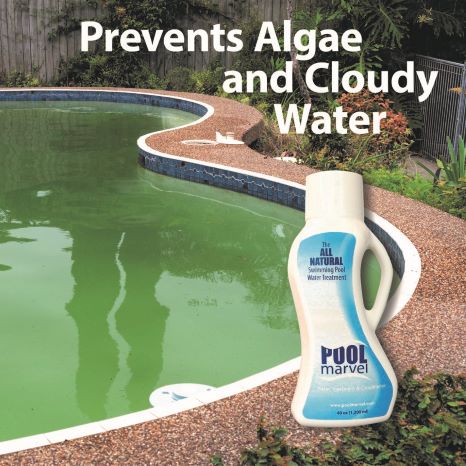
Foam
Foam in pool water can occur quickly, appearing white or off-white on the surface. Although swimming is safe as long as your pool chemicals are balanced, pool foam can make the water feel sticky and uncomfortable.
What Is Swimming Pool Foam?
Unlike regular bubbles, pool foam is thick, dense, and stays on the surface of your pool. It contains water, air, surfactants, detergents, cosmetics, and algaecides.
Pool foam does not pop as easily as bubbles. Instead, this grimy-looking foam floats around your pool water when something has caused the water to thicken – such as a high organic load.
Causes Of Swimming Pool Foam
If your swimming pool has foam, you’ll need to determine the cause before combatting the problem. Many factors can result in pool foam, including:
1. Soaps and Detergents
Residual laundry detergent in bathing suits and soap or shampoo residue introduced by swimmers are the most common causes of foam in a pool.
Completing a shock treatment will eliminate any lingering soap or detergents in your water. Ask all swimmers to take a quick shower before swimming.
2. Low Calcium Levels
After soaps and detergents, low calcium levels are the most common reason behind foamy pool water. Low calcium results in pool water that is too soft, leading to foaming when a pool is heavily used.
Test your water to confirm low calcium levels, then use a good quality calcium hardness product. Retest the water and complete an additional treatment if necessary. Since the only solution for reducing calcium hardness is diluting pool water, use caution when raising calcium hardness levels.
If the problem persists, regularly test and treat for low calcium – it could be because of your home water supply.

3. Dirty Filters
Filter cleaning agents that aren’t thoroughly rinsed off the filters can also cause foaming. Use a non-foaming filter cleaning product like Spa Marvel Filter Cleaner.
4. Organic Matter
If there is an unusually high bather load, sweat, saliva, and urine are all organic matter that can mix with pool chemicals. When the water is not correctly filtered or balanced, organic matter can cause pool foam.
If there’s too much organic material in your pool, complete a chlorine shock treatment to achieve proper water chemistry. In future, encourage bathers to rinse before entering your pool.
5. Chemical Imbalance
If your pool has a chemical imbalance, foaming can occur.
A common chemical imbalance happens when using a pool opening kit. Although convenient for preparing your pool for the season, these kits can add unnecessary substances to your pool water, including clarifier, scale remover, and algaecide. If there’s too much of any one chemical, pool foam can result.
6. High Total Dissolved Solids (TDS)
Total dissolved solids (TDS) are the total of all substances dissolved in your pool water. When TDS levels are too high, there can be pool foam.
Use a TDS meter to measure the level of TDS that is present in your pool water. Draining and refilling the pool with fresh water is one of the best ways to remove foaming caused by high TDS levels.
An anti-foam chemical will not work on foam resulting from high TDS levels.
7. Personal Care Products
Personal care products such as creams, lotions, and ointments can rinse off and stay in pool water. Besides creating foam, personal care products can produce a filmy surface on your swimming pool water.
Usually, running your pool normally will eventually resolve a pool foam problem caused by personal care products. However, an excessive buildup can be resolved by cleaning your pool filter and operating your pool pump for longer than usual. Skim the pool’s surface with a fine mesh skimmer to collect debris.
Showering before entering pool water can ensure minimal personal care products enter the pool.
8. Household Cleaners
If they’re not wiped off properly with a damp cloth, using household cleaners on pool equipment or the pool deck can result in foaming and a chemical imbalance.
9. Algaecides
Pool water can be foamy following an algaecide treatment or after adding an incorrect amount of algaecide.
Time is usually all that’s needed to clear up algaecide foaming. Turn off any water features since they increase foam production, and use a fine net to remove as much foam as possible from the pool surface.
If there’s still plenty of foam following an algaecide treatment, perform a shock treatment and operate your pump and filter. Avoid using low-grade algaecide and only perform an algaecide treatment when necessary.
10. Aeration in Biguanide Pools
Aeration equipment such as air jets in biguanide-treated pool water can create foaming.
Over time, the foaming from aeration equipment should settle and disappear on its own.
How To Get Rid Of Foam In Pool Water
Below are some general solutions to help rid your pool of foam.
1. Wait
Simply switching off the pool pump, adding some chlorine, and leaving the pool alone can cause the foam to dissipate.
2. Use a Hand Skimmer
Use a hand skimmer to remove as much foam as possible from the surface of your pool water.
A hand skimmer won’t remove all the foam since some will still enter the skimmers. However, the remaining small amount should eventually clear up if your chemicals are correctly balanced.
3. Balance Your Pool Water
Test your water and balance any chemicals necessary. Leave your pump running. Wait 1-2 days to see if the foaming persists.
4. Shock Your Pool
If your pool chemicals are balanced, but the foam is still present, try shocking your pool. After shocking, wait a few hours to see whether the pool foam dissipates.
5. Increase Your Salt Water Chlorinator
If you have a saltwater chlorinator, turn it all the way up. This will maximize chlorination and help get rid of high organic loads that are causing foaming.
6. Perform a Backwash
Completing a backwash helps remove any foaming chemicals in the water. Draining a few inches and adding fresh water can dilute the foaming chemical.
7. Use Anti-Foam Chemicals
If all else fails, various anti-foam products are available to eliminate foam efficiently. However, since they do not address the cause of the foaming, they usually only prevent foaming for up to 24 hours. As a result, anti-foam chemicals are only well suited for emergencies.
Anti-foam chemicals are water-based formulas that get added directly into your skimmer or filter intake. Within hours, they break down pool foam and continue preventing the formation of new foam for as long as you use it.
Choose an anti-foaming, concentrated agent that will not affect your other pool chemicals.
Preventing Foamy Pool Water
1. Regularly Test and Balance Your Water
Consistently following a proper pool maintenance schedule is one of the best ways to avoid foam in pool water.
Test your water and ensure that all pool chemicals are always balanced – especially alkalinity, calcium hardness, chlorine, and pH. If chemicals need to be added to bring everything back in balance, ensure you add the proper amounts.
2. Use Quality Pool Chemicals and Cleaners
Poor-quality chemicals are known to cause foaming and other pool problems. Use high-quality chemicals explicitly designed for pools and avoid using copper-based and polymer algaecides when not necessary.
3. Shower Before Swimming
Request bathers to shower before swimming to prevent soaps, detergents, and other contaminants from entering the pool.
4. Inspect Your Pool Equipment
Watch for tiny microbubbles exiting your return jets, inspect your pool equipment for cracks, and make sure your filter is clean.

